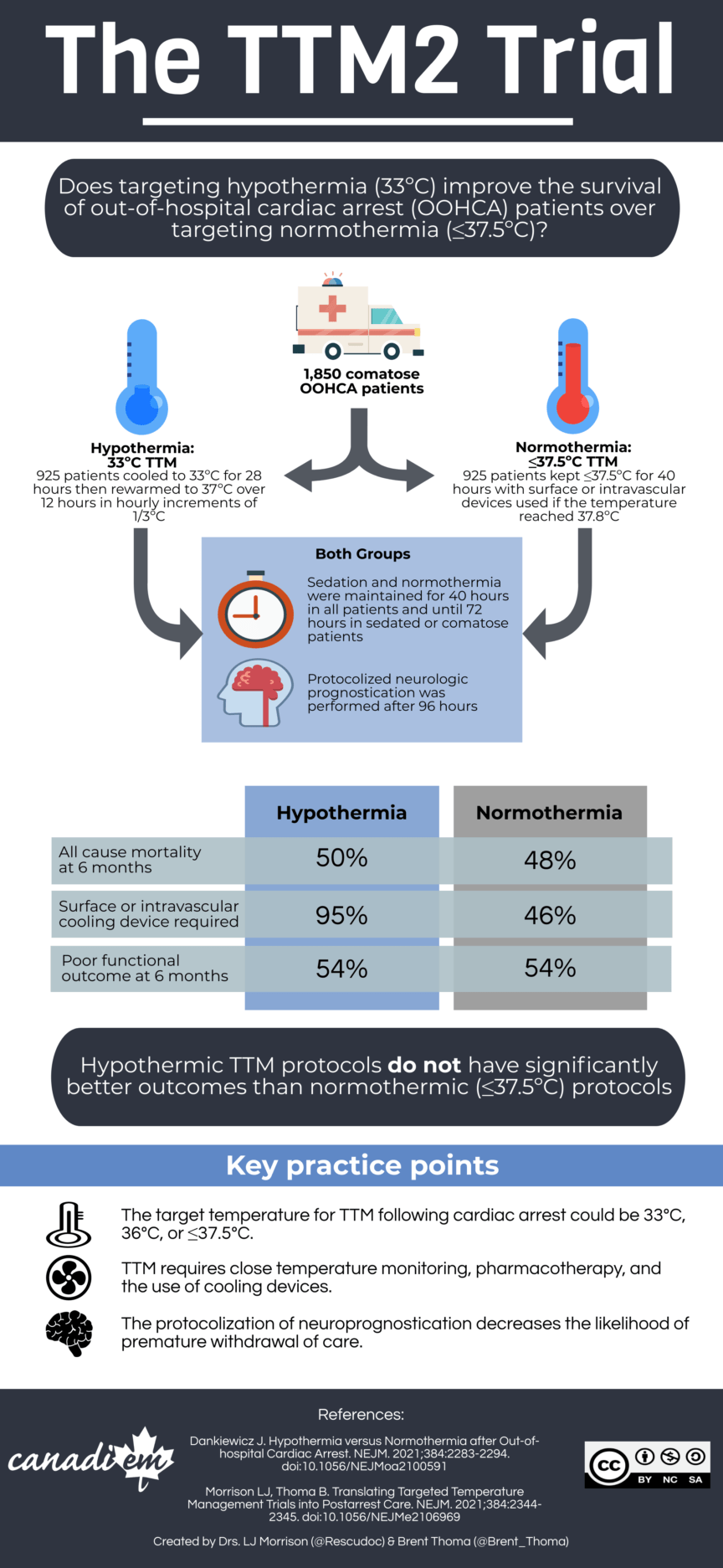The Targeted Temperature Management (TTM) Trial was published in the New England Journal of Medicine in 2013 and had a significant impact on the care that we provide to patients following cardiac arrest. However, it also left questions unanswered. Today, in follow-up to this landmark trial, Dankiewicz et al published the second targeted temperature management trial.1 It aims to address the question:
Does targeting hypothermia (33ºC) improve the survival of out-of-hospital cardiac arrest patients over targeting normothermia (≤37.5ºC)?
To jump to the punch-line, the Targeted Temperature Management 2 (TTM2) study demonstrated that hypothermic TTM protocols DO NOT have significantly better outcomes than normothermic protocols. However, while the target temperature for TTM could be 33ºC, 36ºC, or ≤37.5ºC, the relatively high survival rate found in the study (all cause mortality was 50% and 48% at 6 months in the hypothermia and normothermia groups, respectively) reinforces the need to ensure that each element of the TTM protocol is followed. Key aspects of the TTM2 protocol that was followed for patients in both the control and intervention groups include close temperature monitoring, pharmacotherapy, and the use of cooling devices (such devices were required by 46% of the patients even in the normothermic group). In addition, the study protocolized neuroprognostication in both groups with the goal of decreasing the possibility that care will be withdrawn prematurely.
Notably, the publication of this infographic on CanadiEM shortly after the trial’s release did not occur by chance. Dr. Laurie Morrison (@Rescudoc), an eminent Canadian resuscitation researcher, was kind enough to invite me to write an editorial2 on this article which appears alongside Dankiewicz’s work in today’s issue of the New England Journal of Medicine. With the benefit of time and in an effort to translate some of the key findings of the TTM2 trial, we also co-developed the above infographic. Please refer to our editorial, the article, and its extensive appendices for greater detail on the interpretation of the study results.
The infographic (and all CanadiEM content) is published under am Attribution-NonCommercial-ShareAlike 2.0 Generic (CC BY-NC-SA 2.0) Creative Commons license. A PDF version is available here.
References
- 1.Dankiewicz J. Hypothermia versus Normothermia after Out-of-hospital Cardiac Arrest. NEJM. 2021;384:2283-2294. doi:10.1056/NEJMoa2100591
- 2.Morrison LJ, Thoma B. Translating Targeted Temperature Management Trials into Postarrest Care. NEJM. 2021;384:2344-2345. doi:10.1056/NEJMe2106969


